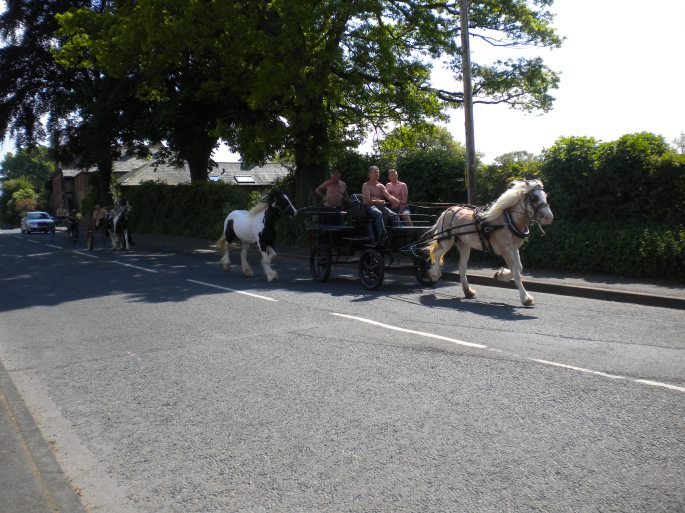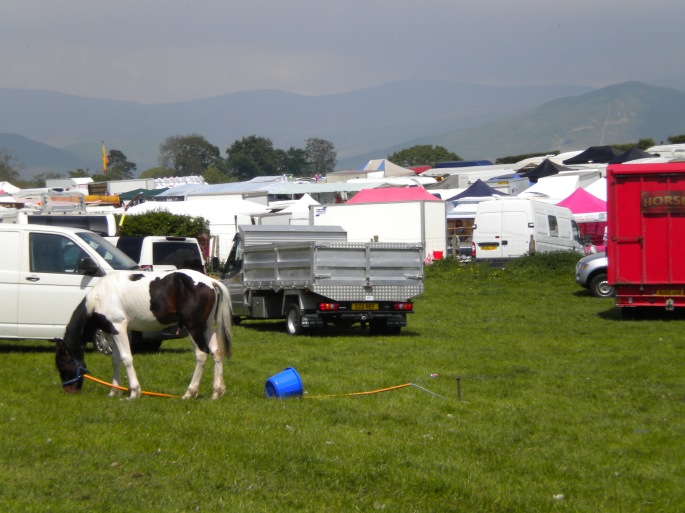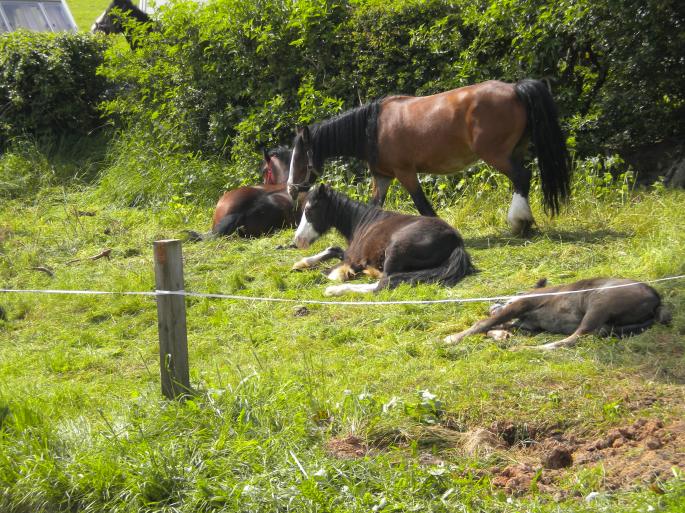Appleby Fair is back again*, for the 328th time (that’s a guess; it’s been going since 1685). According to the Daily Mail, it’s a convergence of ‘around 40,000 travellers from around the world’. Yet another good reason why not to read the Daily Mail. Because that’s what it isn’t. It’s a convergence of around 10,000 travellers and gypsies, and 30,000 ‘visitors’. Both of those are big numbers, but there’s a big difference between 10 and 40.
Why does it matter how many travellers there are? That’s a question with a massive, many tiered answer, but the short of it is: due to a lack of trust between the gypsy community and the local ones here, there is a distinct atmosphere present. The towns and villages hold their collective breath, waiting to see if something ‘happens’ this time. There’s a sense of anticipation, but not in a good way. A bit like a car driver inching their way past an accident in total gridlock, pretending not to look but snatching a good few hungry glances at the mangled wreckage.
From the other camp, there’s something different. Like when someone you know pretends they haven’t seen you. It’s that feeling they give off when they do that. Of innocent, studious not-seeing. That’s what every gypsy camp feels like as you pass.
It isn’t very ethical to promote fear and insecurity in a local population. I really don’t like The Daily Mail.
I looked to The Guardian for a more sensible view, but was disappointed there, too. Its ‘In Pictures’ column shows a series of excellent photos of this year’s horse fair, with a pass-the-sick-bucketing commentary attached to each image. Oh puleeease. They tried to romanticise the travellers, but anyone who has ever been to the fair must know that beyond the sillhouette of a gypsy camp, campfire ablaze, there’s little romance of any kind.
For example, my friend and I visited the fair yesterday, and on stopping for a rest on the way back up the hill to the car, were propositioned by a couple of travellers looking for a one night stand. On hearing from my friend how enormous and hard my fella (Himself) is, the younger guy didn’t miss a beat. “Why don’t you try someone a lot smaller, can get into every place, like even through the back door?” Big charming, broken-mouthed grin.
ACK!
Sure, it was funny, but there really was nothing romantic about the conversation.
Gypsies are, by popular definition, outcasts. Dragged up by their bootstrings, they’re expected to succeed on their wits and success at sales. The chavvy training clothes (men and boys), fluorescent pink lipstick and tight tank tops (girls under 30, regardless of dress size), crew cuts with patterns cut into the sides … all reminiscent of an underclass. You see similar (though slightly less outrageous) outfits on inner city housing estates.
The majority doesn’t have sufficient access to money or education; many don’t bother with healthcare, other than in an emergency. What makes gypsies different – and more vulnerable – from well established housing estate populations, is they don’t even have the pleasure of looking around them at school, or work, and thinking that most of the people around them are in the same boat.
The gypsy culture is different, though many – likely the majority and estimated to be at least 50% – do live in houses; they don’t get to experience a sense of cultural solidarity unless they live in a permanent camp, or at massive meetings, like Appleby Horse Fair.
They’re unfairly tarnished with a derogatory image; as a group, their main crime is having a different culture living amongst a majority culture.
There’s always a criminal element amongst any group of people. Hell, what the townsfolk forget at times like these is that they have their own criminal elements who are prepared to take advantage of the gypsy presence. Crime levels go up, but who’s to say that it’s the visitors and not the locals?
What really gets my goat is that whenever someone writes about gypsies, or tries to portray them to a mass audience, they are moulded into the image that person wants them to fit. Romantic, scary, criminal, these are views, not the culture itself.
Here’s a blog, Romagraphic by someone who is clearly an educated Romani. It lends a little perspective.
And I’ve used the term gypsy throughout because I love the word. The romantic image of the toughened nomads travelling the world resides in my head from a childhood filled by Enid Blyton books. Even though I know it’s not romantic. I checked it out, and it would appear that it is shortened versions of the word which are considered racist, but the word gypsy is politically correct enough. Hopefully.
*actually, it was last week, but it’s taken me a week to write this post



















54.577232
-2.797483





















